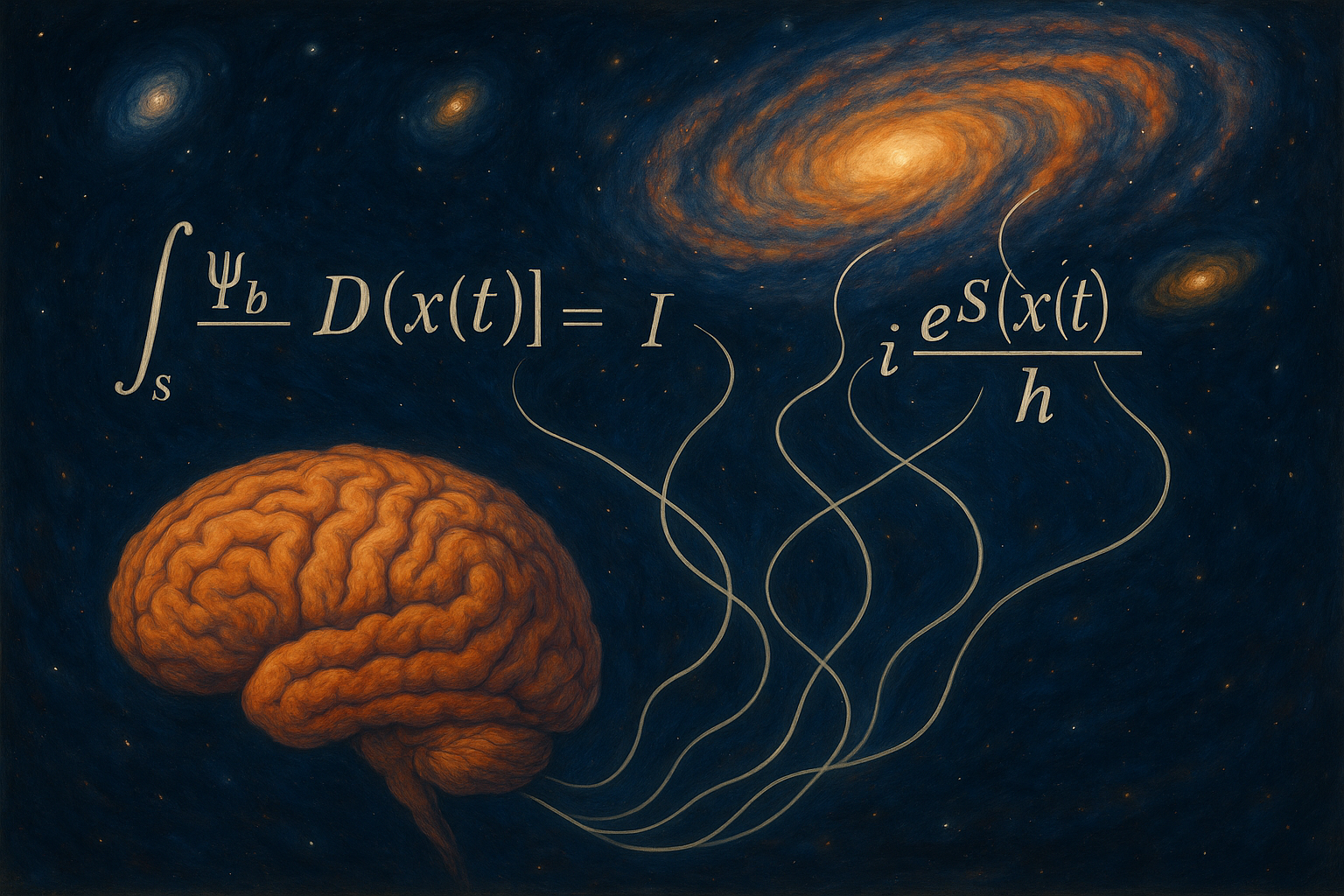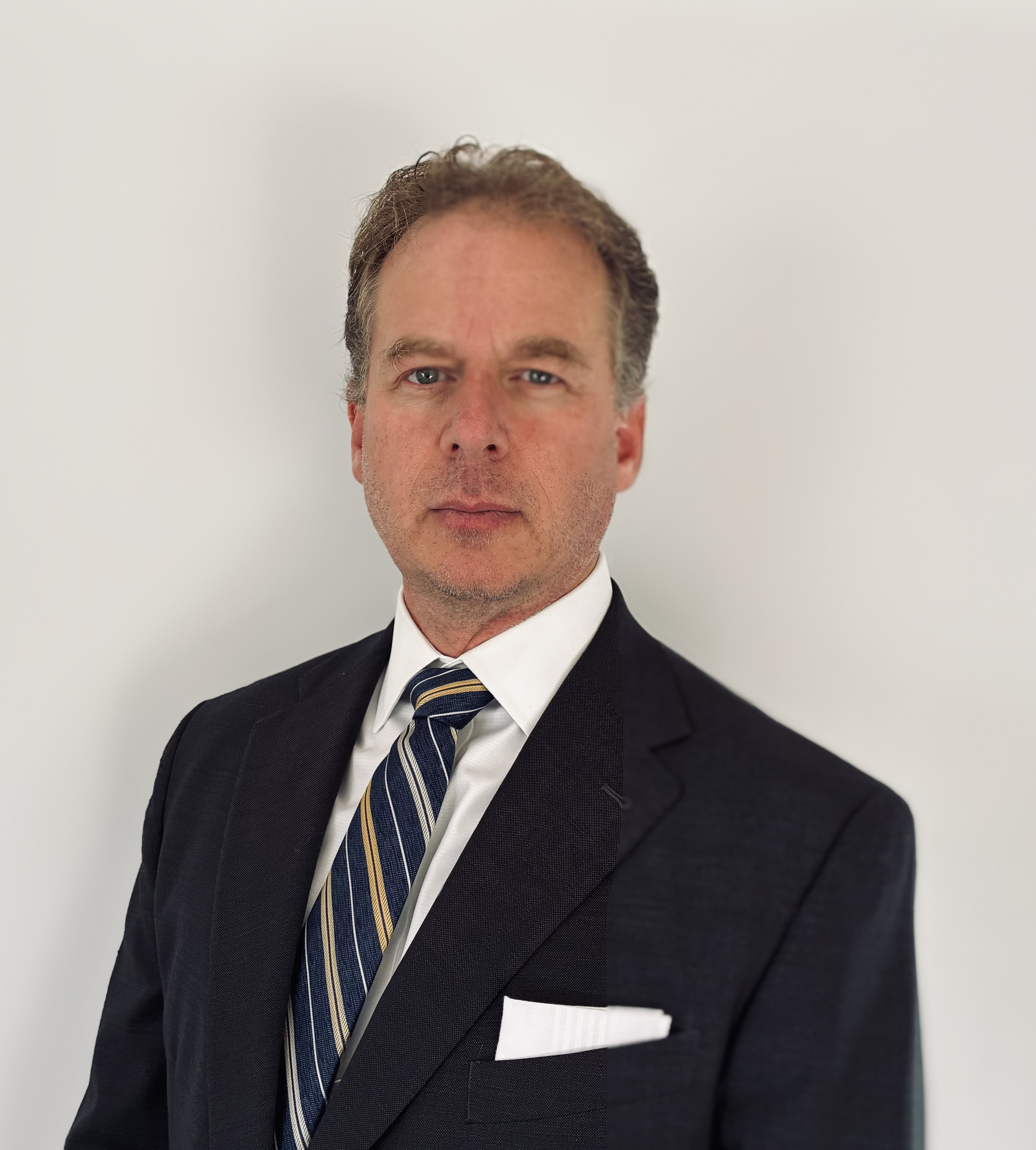The Path of Least Action
- Essay
- 4 mins
A Revolutionary Discovery
In the 1940s, physicist Richard Feynman made a startling discovery about how particles move through the world. He found that when a photon travels from point A to point B, it doesn't simply take the most direct route. Instead, it "explores" every possible path simultaneously—straight lines, wild zigzags, loops through distant galaxies—all at once. Yet when we observe the photon, we see it following just one path: the one that requires the least "action," a precise mathematical quantity that balances energy and time. If photons had agency, we might say they were following the path that requires the least effort.
This isn't just a quirky feature of tiny particles. It's a fundamental principle called the "path integral formulation" that describes how reality works at its deepest level. A basketball arcing through the air also exists in all places in the universe, but "materializes" on the path we observe because that path minimizes the "Action". Even biological systems, which fundamentally are thermodynamic engines that minimize energy, have direct mathematical equivalence to the principal of least action. In summary - all possibilities exist in a state called superposition, but our observed reality is the possibility that follows the most energy efficient path... The Path of Least Action.
The Human Path of Least Action
Consider the countless decisions you make each day—what to say in a conversation, whether to take a risk, how to respond to conflict. Each moment presents infinite possibilities, yet you experience only one path through time. Like Feynman's photon, you are unconsciously exploring all possible choices, and your actual experience emerges as the path that optimizes something fundamental about human existence.
What does "least action" mean for a human being? It's not simply avoiding effort or seeking comfort. Instead, it is the path that best balances your psychological energy over time. Ideally this means choosing difficult conversations over avoiding them, because avoidance costs more energy in the long run, or stepping back from unnecessary conflict, even when your ego wants to fight.
Consider someone who consistently creates drama over perceived slights. From the outside, this seems like they're choosing maximum friction. But they might actually be following their personal path of least action—optimizing for psychological safety by creating predictable, manageable conflict rather than facing the vulnerability of genuine connection. Their nervous system, shaped by past experiences, has learned that controlled chaos requires less energy than the uncertainty of authentic relationship.
The Ecosystem of Experience
The analogy becomes even more profound when we consider that particles don't move through empty space but constantly interact with quantum fields around them. Humans, likewise, exist within webs of relationship where everyone is simultaneously shaping and being shaped by everyone and everything else. Your choice to avoid a difficult conversation doesn't just affect your path—it changes the landscape of possibilities for everyone around you.
This creates a beautiful complexity. When you finally choose courage over comfort, or compassion over judgment, you are not just changing your own trajectory, but participating in a collective "measurement" that helps determine which version of reality becomes manifest for your family, your community, your world. Every genuine interaction is like a quantum measurement that collapses possibilities into experienced reality.
The Role of Consciousness
This leads to a remarkable consequence: consciousness itself might function like the "observer" in quantum mechanics. In physics, the act of measurement doesn't just reveal reality—it participates in creating it. Similarly, where you place your attention, how you interpret events, and what you choose to focus on actively contributes to selecting which possibility becomes your lived experience.
Most of us operate with very narrow awareness, like a measurement device that can only detect a small slice of what's actually happening. We get locked into experiencing the same patterns because our habitual ways of paying attention keep "measuring" reality in the same way, collapsing the infinite field of possibilities into familiar, limited experiences.
Expanding the Measurement
This is where practices like prayer, meditation, and even approaches like manifestation become profound rather than wishful thinking. These are not about forcing the universe to give you what you want. Instead, they are about learning to "tune" your consciousness to access experiences that were always there, but previously beyond your awareness.
When you pray or meditate, you practice expanding your "measurement apparatus." Instead of consciousness being narrowly focused on problems, fears, or desires, it opens to encompass broader possibilities. You become aware of paths where compassion is easier than judgment, where curiosity is more natural than defensiveness, where gratitude flows more freely than complaint.
This doesn't mean thinking, or the absence of thought, can magically change external circumstances. Rather, it suggests that reality is far richer than our usual narrow band of perception allows us to experience. The beauty, interconnectedness, and joy are always there, existing in superposition alongside the struggle and separation. Expanding awareness doesn't create these experiences—it accesses what is already present.
Living in the Field
Perhaps the most beautiful implication is that we are never actually separate from each other or from the world around us. Just as particles exist in constant interaction with quantum fields, we exist within fields of consciousness, relationship, and meaning that connect us to everything. The "path of least action" for a human being involves learning to align with these larger currents of connection rather than struggling against them.
When we stop trying to force our individual will against the world and instead learn to sense the deeper currents of what wants to emerge, we find ourselves in flow states where right action arises naturally. Not because we've eliminated effort, but because we've learned to work with the grain of reality rather than against it.
In the quantum world all possibilities exist simultaneously, waiting to be observed into manifestation. The same is true in the world of human relationships, where every moment becomes an opportunity to participate in the universe's constant creation of itself. Every choice to see beauty, confront ugliness, connect, or distance - every possibility is a quantum measurement that helps determine which version of reality emerges for all of us.

